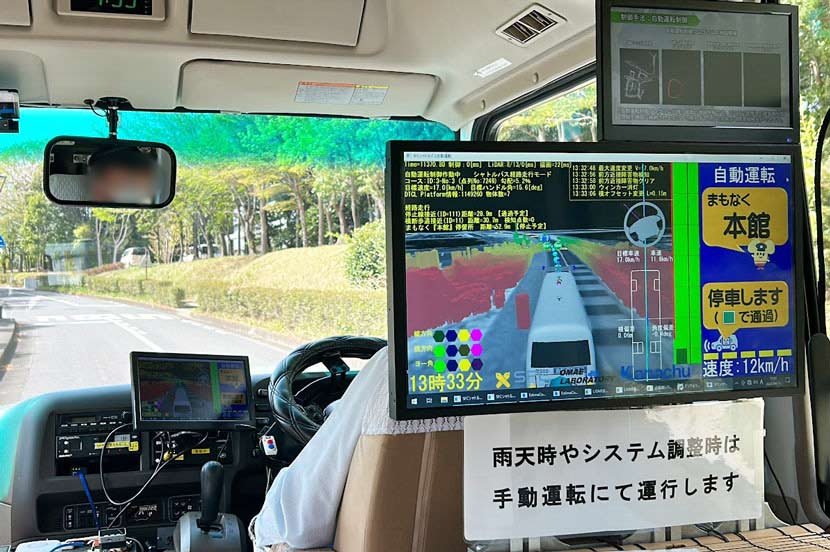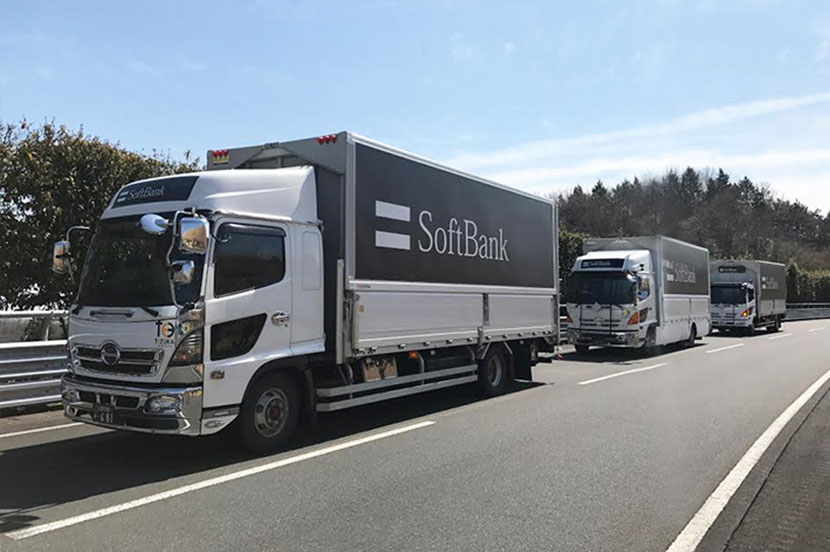
Bus Rapid Transit (BRT) is a public transportation system designed to provide a high-capacity bus service that combines the speed and reliability of rail systems at much lower costs. With these advantages, BRT systems are seeing increased adoption in cities around the world.
As Japan faces a shortage of drivers and other mobility issues, the Government of Japan is working to enable an environment with dedicated and prioritized lanes for BRT with Level 4 automated driving. With Level 4, autonomous vehicles can conduct driving tasks without human intervention in certain areas.
As reported earlier by SoftBank News, West Japan Railway Company (JR-West), a major railway company that operates in western Honshu, and SoftBank Corp. (TOKYO: 9434) have been actively researching BRT with the aim of becoming the first companies in Japan to realize the operation of automated buses that form platoons. Platooning involves multiple vehicles traveling together that keep a constant and regular distance between them.
At a press conference held in Kyoto on September 15, 2023, JR-West Vice President, Representative Director and Executive Officer Keijiro Nakamura and SoftBank Corp. President & CEO Junichi Miyakawa gave an important update on their joint BRT initiative.

As part of their aim to operationalize a system where buses powered by autonomous driving technology run as platoons on dedicated roads, JR-West and SoftBank are preparing to commence field trials in Hiroshima Prefecture starting November 2023.
Specifically, a roughly 5km route on a public road connecting JR Saijo Station in Higashihiroshima City and Hiroshima University's Higashi-Hiroshima Campus will be used for the trial. The start of this trial will mark Japan's first platooning of articulated buses and large-sized buses.
5G key to inter-vehicle communication that enables platooning
To realize bus platooning, low-latency and high capacity wireless communications are key. SoftBank successfully demonstrated the necessary redundancy in Vehicle-to-Network-to-Vehicle (V2N2V) communications, where vehicles communicate with each other via a base station, by using multiple communication methods powered by its 5G technologies. By utilizing its proprietary 5G SA (Stand Alone) devices, SoftBank also greatly reduced latency times and accelerated data processing speeds.
To ensure smooth coordination with traffic signals and railroad crossings, as well as safe driving and stopping, SoftBank is also leveraging its high-precision positioning service 'ichimill' to enhance the accuracy of self-position estimation in the buses.

Members of the press received a test ride following the press conference
JR-West’s Nakamura noted that JR-West is aiming to implement practical BRT applications by around the mid-2020s. SoftBank’s Miyakawa commented, "I believe that this BRT system will set the stage for a new type of transportation infrastructure in Japan. We want to ensure that it’s safe and reliable."
Both companies plan to pursue Level 4 autonomous driving certification for the BRT system by the mid-2020s and, in cooperation with local communities, will aim to provide sustainable next-generation mobility services.
Related News
(Posted on September 27, 2023)
by SoftBank News Editors






